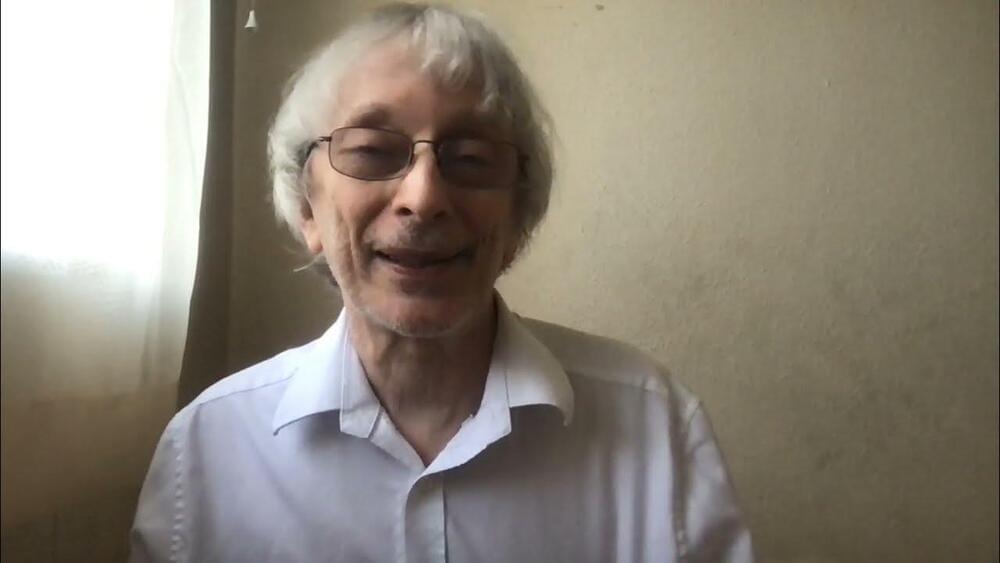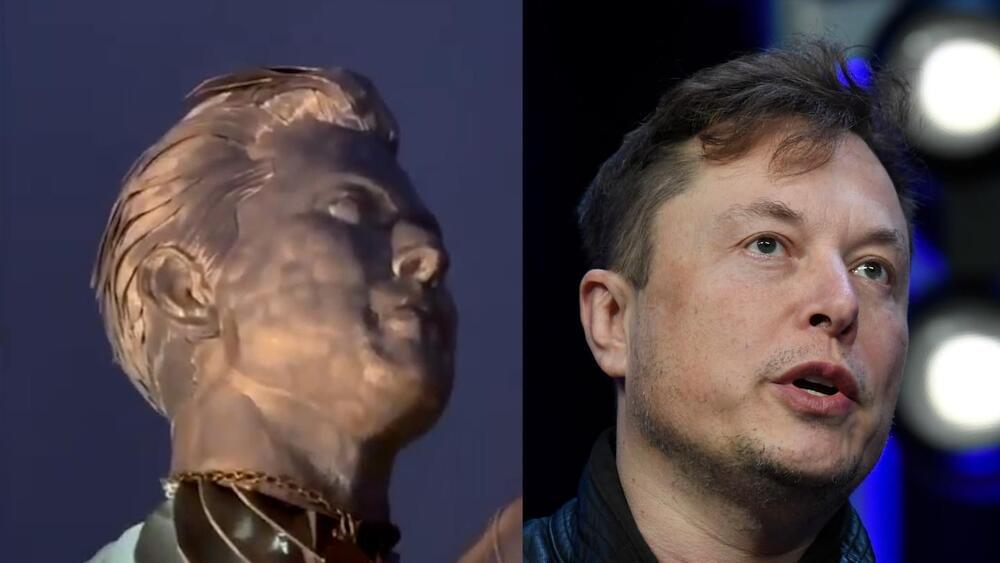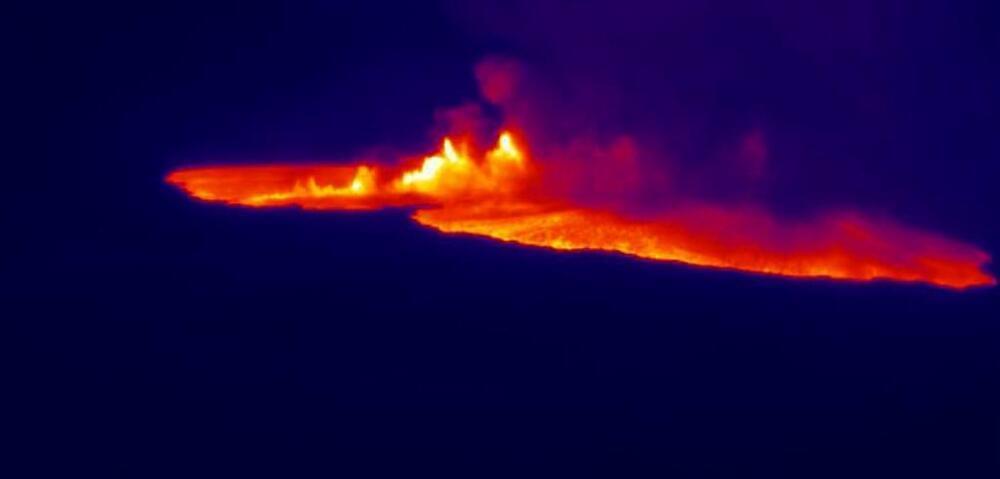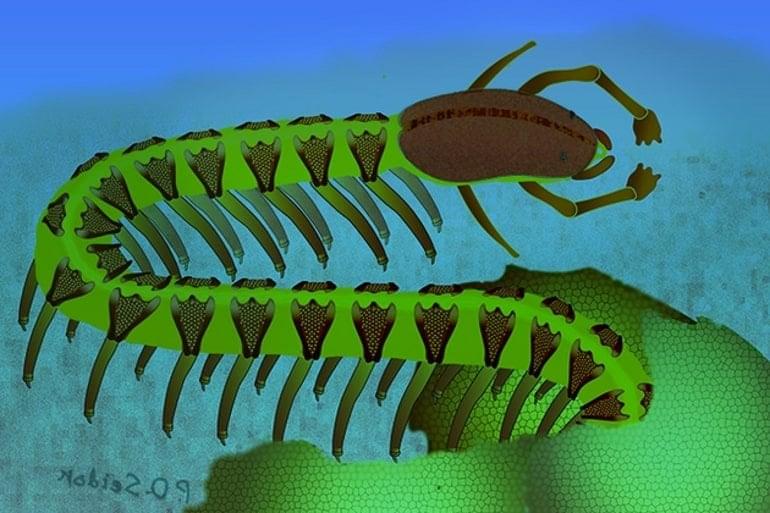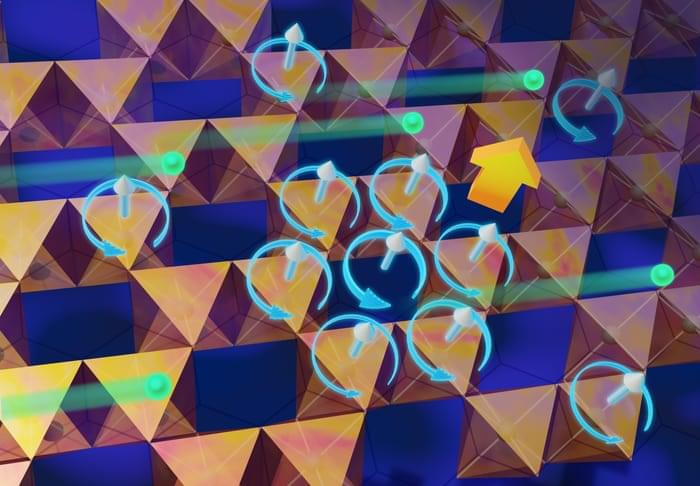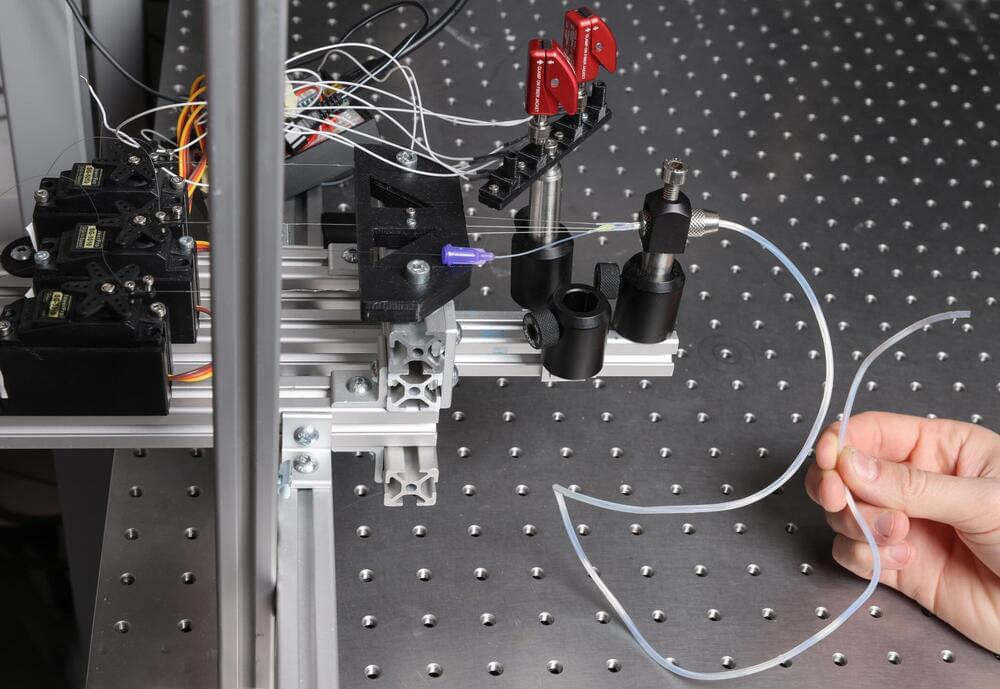
Borrowing from methods used to produce optical fibers, researchers from EPFL and Imperial College have created fiber-based soft robots with advanced motion control that integrate other functionalities, such as electric and optical sensing and targeted delivery of fluids.
In recent decades, catheter-based surgery has transformed medicine, giving doctors a minimally invasive way to do anything from placing stents and targeting tumors to extracting tissue samples and delivering contrast agents for medical imaging. While today’s catheters are highly engineered robotic devices, in most cases, the task of pushing them through the body to the site of intervention continues to be a manual and time-consuming procedure.
Combining advances in the development of functional fibers with developments in smart robotics, researchers from the Laboratory of Photonic Materials and Fiber Devices in EPFL’s School of Engineering have created multifunctional catheter-shaped soft robots that, when used as catheters, could be remotely guided to their destination or possibly even find their own way through semi-autonomous control. “This is the first time that we can generate soft catheter-like structures at such scalability that can integrate complex functionalities and be steered, potentially, inside the body,” says Fabien Sorin, the study’s principal investigator. Their work was published in the journal Advanced Science.
